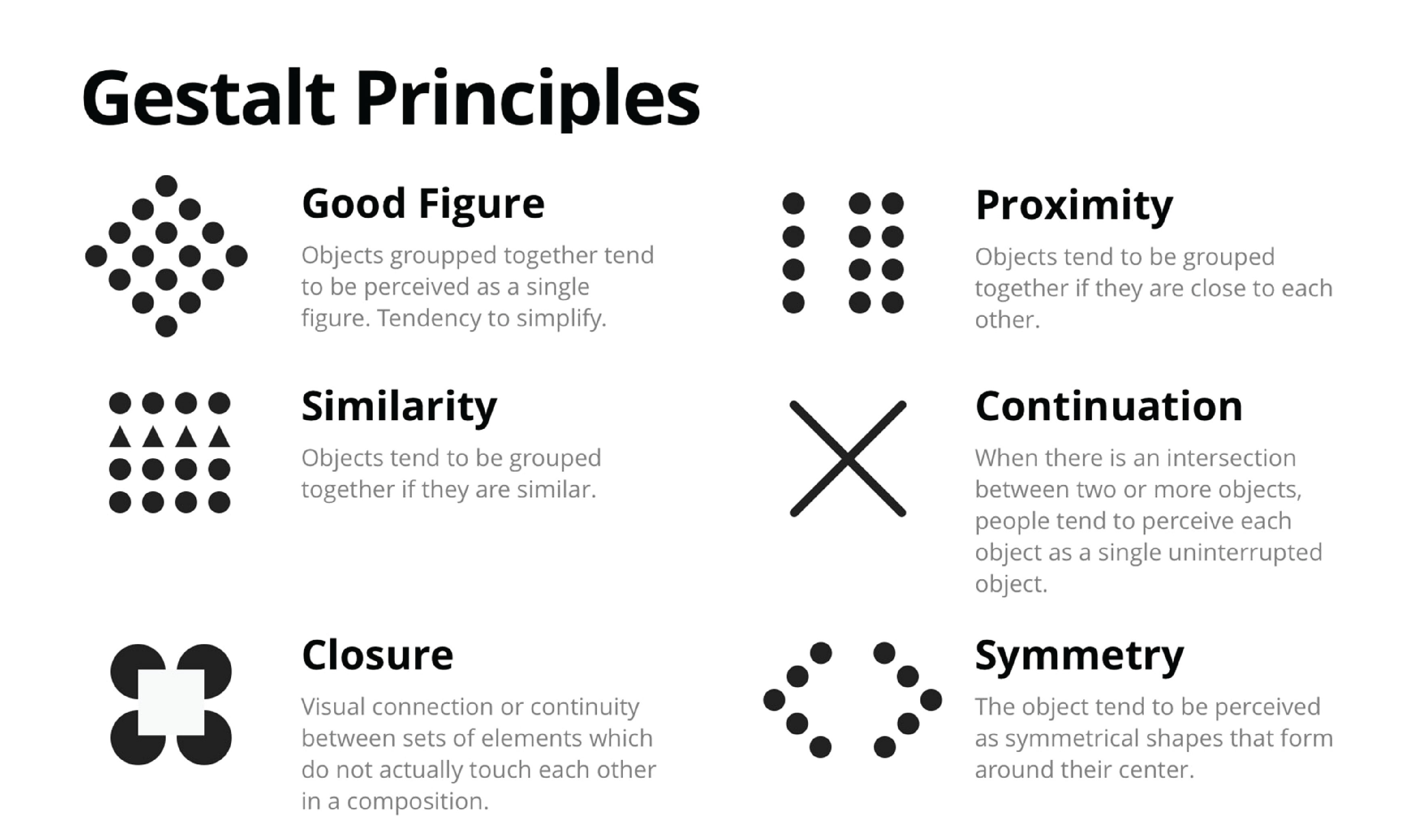In the world of design and visual communication, understanding how humans perceive and organize visual elements is crucial. This is where the Gestalt Principles come into play. Originating from the field of psychology, these principles explain how our brains interpret and group visual stimuli to make sense of the world. Let’s dive into what these principles are and how they shape effective design.
What Are the Gestalt Principles?
The term "Gestalt" is a German word meaning "shape" or "form." The Gestalt Principles were developed in the early 20th century by German psychologists, who studied how people perceive patterns and objects. These principles reveal that we naturally seek patterns and relationships between elements, even when they are not explicitly presented.
Here are the key principles:
1. Proximity
Elements that are close to each other are perceived as a group.
- Example in Design: Think of a menu layout where related items are grouped together, making it easier for users to navigate.
2. Similarity
Objects that look similar are seen as related.
- Example in Design: Using consistent fonts, colors, or shapes in a website design helps users identify related sections or actions.
3. Continuity
Our eyes follow paths, lines, or curves naturally.
- Example in Design: A flowing line or an arrow guides users’ attention across a page, making navigation intuitive.
4. Closure
Our minds fill in gaps to create a complete image.
- Example in Design: Logos like the WWF panda or the FedEx arrow use negative space to imply shapes, creating a memorable visual impact.
5. Figure-Ground
We instinctively separate objects (figure) from their background (ground).
- Example in Design: Text on a contrasting background ensures readability and clarity.
6. Symmetry and Order
We perceive balanced and symmetrical designs as harmonious and pleasing.
- Example in Design: A well-aligned grid layout in a magazine or app creates a sense of order and professionalism.
Why Are Gestalt Principles Important in Design?
The Gestalt Principles are essential because they:
- Enhance User Experience: They make designs intuitive and easy to understand.
- Guide Attention: They help designers direct users' focus to the most important elements.
- Create Visual Harmony: They ensure that designs are aesthetically pleasing and cohesive.
Applying Gestalt Principles in Your Work
To apply these principles, always consider how your audience will perceive and interact with your design. Here are some tips:
- Use proximity to group-related information, like in a form or a list.
- Apply similarity to create a consistent and professional look.
- Leverage continuity to guide users’ eyes to important actions or messages.
- Experiment with closure and negative space to create memorable visuals.
Conclusion
The Gestalt Principles are a powerful tool for designers, marketers, and anyone involved in visual communication. By understanding how people perceive and process visual information, you can create designs that are not only functional but also emotionally engaging and impactful.
Start experimenting with these principles today and watch your designs transform!
 January 15, 2025 - BY Admin
January 15, 2025 - BY Admin